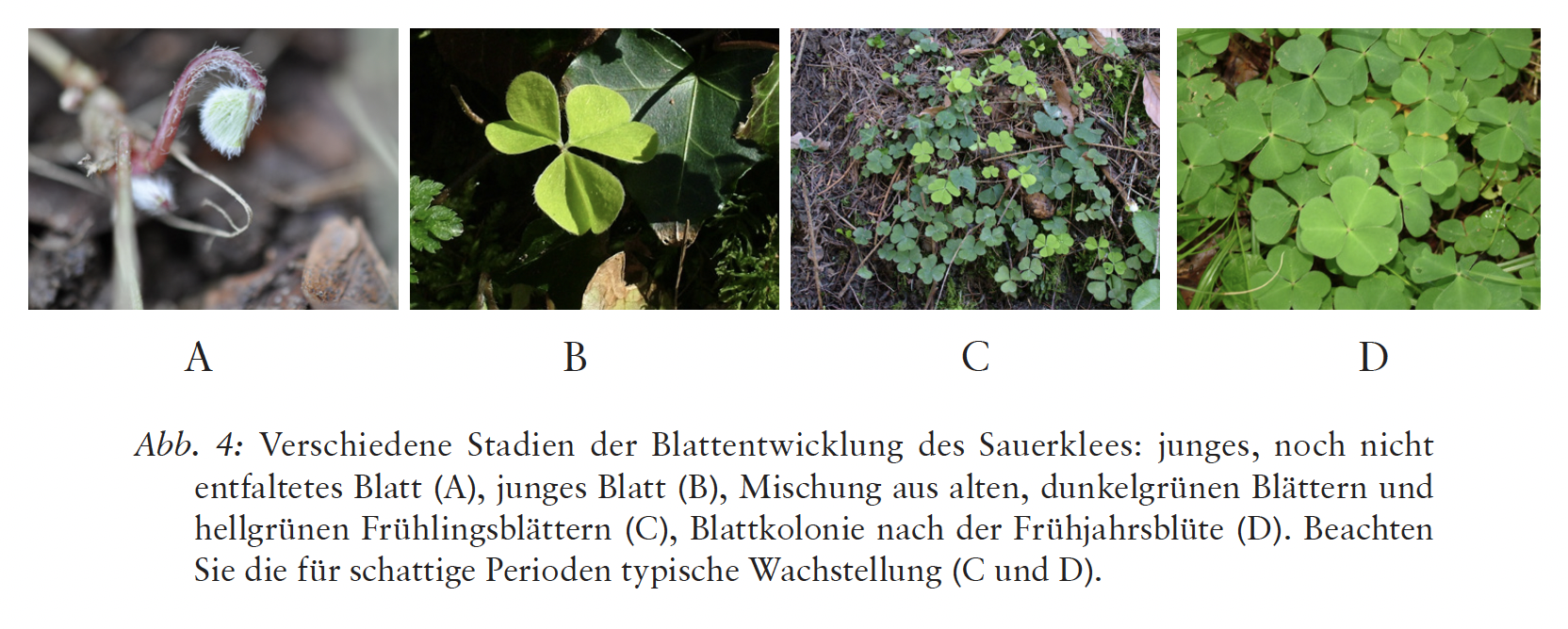Der Sauerklee (Oxalis acetosella L.): Botanische Aspekte und therapeutischer Überblick
Export Article Citation as
- Plain text
- BibTeX
- RIS format
- Download price : € 6.00
Abstract:
Wood Sorrel (Oxalis acetosella, Oxalidaceae) is a shade-loving plant rich in acidic potassium oxalate, from the cold and humid latitudes and altitudes of Europe. It roots in the leaf litter and avoids contact with the soil; it has no woody parts. The stem with adventitious roots (the rhizome) remains hidden and creeps through the decaying layer of leaves that covers the forest floor; the stem of the spring flowers is the only upright part of the plant. Reproduction is mainly vegetative. The rhizome has flower-bearing segments with very short internodes that alternate with purely vegetative segments with long internodes. The low photosynthetic efficiency of wood sorrel is typical of shade plants. In the sparse spring undergrowth it opens its flowers to pollinators (chasmogamous flowering), whereas in the shade of leafy trees it self-pollinates with the flowers closed (cleistogamous flowering). The plant is very sensitive to environmental influences: Its leaflets are capable of movements induced by day and night, by light and shadow, and also by touch. In anthroposophical medicine, wood sorrel is used alone or in combination with other plants for acute spastic conditions or in disorders of the self-regulating capacity of the abdominal neuro-vegetative system.








